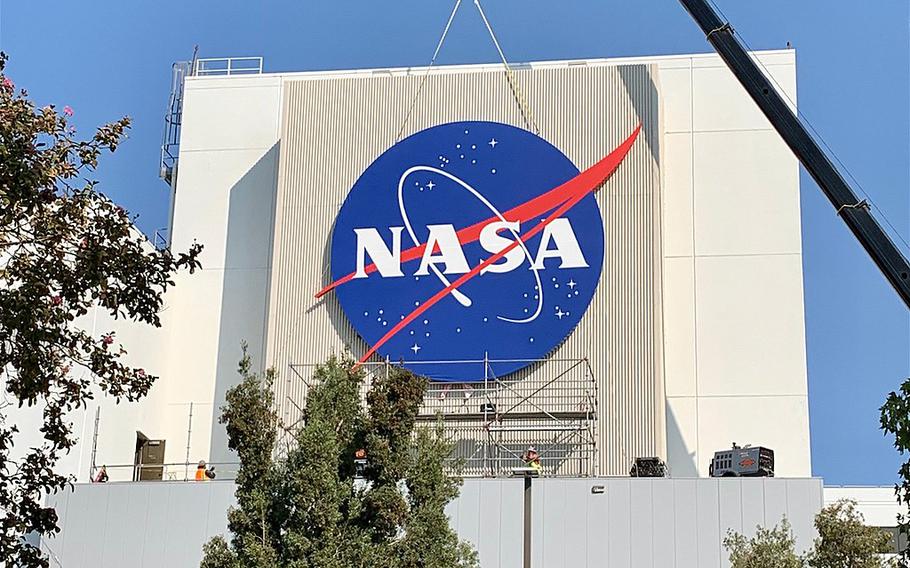
NASA’s Jet Propulsion Laboratory. NASA spacecraft reunites with Earth after 17-year trip around the sun. (WikiMedia Commons)
For nearly 17 years, NASA’s Solar Terrestrial Relations Observatory-A spacecraft drifted through space on a lonely mission. It traveled around the sun far ahead of Earth, conducting groundbreaking research on the solar system’s star.
Like many NASA spacecraft, STEREO-A outlived its mission life span of two years. Instead, it traveled farther and farther away from Earth on a journey that became fraught with uncertainty as it passed behind the sun in 2015, temporarily severing contact with NASA. The same year, the agency lost contact with STEREO-A’s sibling vessel, STEREO-B, which was traveling a similar path.
But STEREO-A kept going. And its orbital trajectory around the sun meant that it had a chance to do what very few other NASA spacecraft could: eventually make its way back toward home.
That came to fruition earlier this month, when STEREO-A passed between the sun and the Earth for the first time since its launch in 2006, NASA announced. The flyby marked a milestone for the spacecraft and the team that has monitored its progress - and a chance for STEREO-A to prove its relevance almost two decades later. As it continues to pass by Earth, STEREO-A will be used to perform new research on the sun, aided by newer NASA satellites that have been developed since its launch.
“This is a point in time for this mission to shine again,” Lika Guhathakurta, STEREO’s program scientist, told The Washington Post.
The two STEREO spacecraft launched in October 2006 with an ambitious mission: to generate a 360-degree view of the sun by observing the star from two vantage points as they circled it on orbits that diverged from the Earth in opposite directions. STEREO-A maneuvered into an orbit around the sun ahead of Earth, and STEREO-B began circling the sun in the opposite direction behind the Earth.
The difference in perspective was groundbreaking, Guhathakurta said. Earthbound instruments can only ever observe one Earth-facing slice of the sun at a time, while the rest of the rapidly changing solar surface remains obscured. The twin STEREO spacecraft, from their offset positions, allowed scientists to capture a 360-degree view of the sun for the first time, a feat that still awes Guhathakurta.
“Seeing the sun from the front and from the far side at the same time - extraordinary,” she said. “We are on planet Earth, human beings, and we are achieving that.”
The STEREO craft also allowed scientists to better study the sun’s roiling surface and the hazards that erupt from it. The two craft, operating the same way two eyes create depth perception, provided a three-dimensional view of the sun and of coronal mass ejections - a phenomenon in which plumes of plasma and magnetic field shoot outward from the sun’s outer atmosphere at hundreds or thousands of miles per second, potentially threatening Earth’s power grid and satellites, as well as other planets and NASA spacecraft. That imagery allowed scientists to track the shape, density and velocity of coronal mass ejections as they rippled across the solar system.
As STEREO-A and STEREO-B continued on their orbits, they neared the far side of the sun in 2014. It was a testament to how far they’d traveled, but also a huge risk - moving directly behind the sun would sever communication between the spacecraft and NASA for a period of several months.
The two wayward spacecraft, years past their expiration dates, had not been designed to operate without communication from NASA for that long. While conducting tests in preparation for the downtime, the agency lost contact with STEREO-B. NASA briefly regained contact with the spacecraft in 2016 but determined that a malfunctioning component had sent it into an uncontrollable spin, leaving it unable to orient its antenna or solar panels properly, and the agency gave up on recovery efforts.
STEREO-A, however, emerged from the far side of the sun unscathed - and began the long trip back toward Earth. Earlier this month, the spacecraft passed between Earth and the sun, coming within around 5 million miles of Earth, according to NASA.
The spacecraft arrived back near Earth at an opportune time, Guhathakurta said. When STEREO-A was launched 17 years ago, it viewed the sun during a solar minimum, a low point in the sun’s 11-year cycle of high and low solar activity. That limited the number of coronal mass ejections and other phenomena that the spacecraft initially observed. This year, STEREO-A’s return has coincided with a period of intense solar activity.
And its flyby means it can finally return to the work it once performed with its lost sibling. A capable fleet of satellites and probes near Earth will help STEREO-A re-create the 3D imaging of the sun it once captured with STEREO-B, the agency said.
STEREO-A will continue to work on the edge of solar physics. Scientists hope to use the new data gathered during the spacecraft’s flyby to examine a recent theory that coronal loops - giant arcs of solar material that crisscross the sun’s surface when viewed in ultraviolet light - may be optical illusions.
For Guhathakurta, who began working on the STEREO mission in 1998, STEREO-A’s perseverance after such a long journey is heartening.
“It’s like seeing your children grow up and do extraordinary things,” Guhathakurta said. She added that STEREO-A’s mission may not be finished, depending on NASA’s budgeting decisions. Either way, STEREO-A will continue on its course for another orbit around the sun.
“They don’t stay home,” Guhathakurta added, laughing. “They drift away very quickly.”